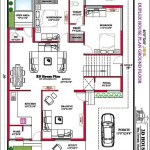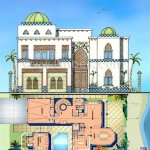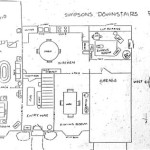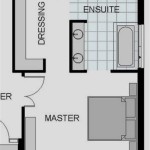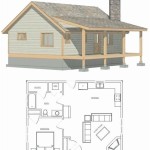Pompeii House Plan: A Glimpse into Ancient Roman Architecture Step inside the fascinating world of ancient Roman architecture with the Pompeii house plan, an enduring legacy of the city's rich history. This virtual tour takes you through the intricate layout and design elements that characterized Pompeii's residential dwellings, providing a glimpse into the daily lives of its inhabitants. 1. The Atrium: The Heart of the Home Enter through the fauces, a narrow passageway that leads to the heart of the house—the atrium. Acting as the central courtyard, the atrium was the focal point of the home and served as a gathering place for family and visitors. Surrounded by columns and decorated with frescoes and mosaics, the atrium often featured an impluvium, a shallow basin used for collecting rainwater. 2. Cubicula: Private Sleeping Quarters Flanking the atrium, you'll find the cubicula, or bedrooms. These private chambers varied in size and decoration, reflecting the social status and wealth of the homeowner. Some cubicula featured elaborate wall paintings, intricate mosaics, and built-in furniture, while others were more modest in design. 3. Tablinum: A Versatile Space Adjacent to the atrium, you'll encounter the tablinum. This multipurpose room served as a study, office, or formal reception area. The tablinum was often used by the pater familias (head of the household) to conduct business or receive guests. 4. Triclinium: Dining in Style No Roman house was complete without a triclinium, the dining room. Here, the family gathered to enjoy meals together. Triclinia typically featured a large table surrounded by three couches, allowing diners to recline while they ate. 5. Peristyle: A Private Oasis Step outside the atrium and into the peristyle, an open courtyard surrounded by a colonnade. This serene space served as a private garden and a place to relax and escape the bustling city streets. The peristyle often featured flower beds, fountains, and sculptures, creating a tranquil oasis within the home. 6. Kitchen and Service Areas While the kitchen and service areas were often relegated to the back of the house, they played a crucial role in the daily运作 of the household. These areas typically comprised a simple очаг, oven, and storage facilities. Slaves and servants carried out the tasks of cooking, cleaning, and maintaining the house. The Pompeii house plan, with its distinct layout and architectural features, offers a glimpse into the social, cultural, and domestic aspects of life in ancient Rome. As you explore these virtual spaces, you can appreciate the ingenuity and creativity of the ancient Romans, who skillfully integrated practicality and aesthetics to create enduring architectural masterpieces.

60906 Plan

Pompeii House Of The Vettii Article Khan Academy

60204 Plan

Pompeii S Richest Residence The House Of Faun Ancient Roman Houses

House Of The Faun Home

File Pompeii Region Vi Insula 8 House 3 Plan 01 Jpg Wikipedia

Plan Of A Pompeian House Roman Courtyard Plans Villa

11004 Plan

File Ground Plan Of The House Tragic Poet Pompeii Jpg Wikimedia Commons

Roman Domestic Architecture Domus Article Khan Academy

